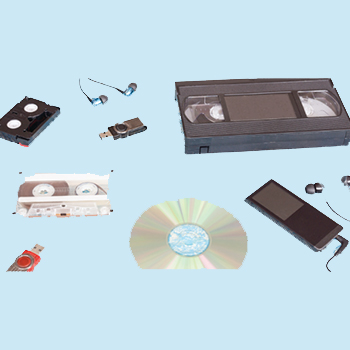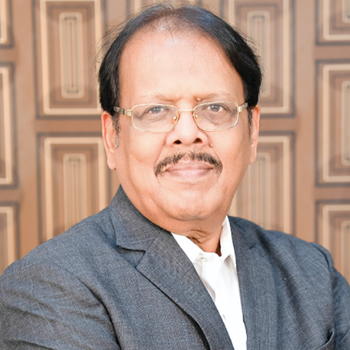Scripting new viewership dimensions

"With an entrepreneurial mindset, Sushilkumar Agrawal, Chairman and Managing Director, Ultra Media and Entertainment Group, initially established his career in the agrochemicals business in 1979. Armed with an MSc degree, his scientific acumen intertwined with his passion for business, but gradually changed course towards the media and the entertainment sector. His breakthrough came in 1989, securing the video rights for the blockbuster flick - ‘Maine Pyar Kiya’, and strategically marketed it in India. The move rewrote the industry’s history, transforming a nascent industry plagued by piracy into a profitable business sector. He initially stepped into the music sector, soon expanding into film distribution, home video and digital content. Sushilkumar Agrawal shares his journey, highlighting his company’s growth and the industry’s transformation"
Sometimes a ‘real’ story can call for a longer ‘take’ to achieve its blockbuster ratings. Sushilkumar Agrawal, CMD of Ultra Media and Entertainment Group, resonates a journey that is no less than the films and media offerings that his company distributes. Growing up, he was fascinated by the magic of storytelling and the impact it had on people's lives. “Watching movies sparked my imagination. My interest in the media and entertainment sector was ignited by my love for music and films. As I explored these art forms more, I became intrigued by the creative process, the technology involved, and the business side of the industry. It has a unique ability to bring people together, evoke emotions, and inspire change,” said Sushilkumar. He has seen the transition from Video Home System (VHS) to Video Compact Discs (VCD)s, then Digital Video Discs (DVD)s, and now to Over-The-Top (OTT) streaming platforms. Over the years, Ultra has evolved into a diversified media group, covering film restoration, content syndication, animation and digital entertainment. “Today, we continue to expand, adapting to industry shifts while staying true to delivering great stories to audiences worldwide,” said Sushilkumar.
Ushering in a new wave

In 1983, with an initial investment of INR 10 lakh, Sushilkumar established a VHS, a video cassette manufacturing facility. In a breakthrough moment in 1989, the company secured the video rights for the film "Maine Pyar Kiya", which turned it into a cult phenomenon. In distribution and copyrights parlance, it became a case study within the Hindi films, video and music industry. During the period, they acquired the rights to classic, old, and new films, building an enviable catalogue.
In 1993, they acquired music rights and marketed audio cassettes at a time when the audio industry was booming, and saw an opportunity to build something meaningful. They launched Ultra's music division, "Ultra Music", which now owns music tracks of over 25,000 film and non-film songs,” said Sushilkumar. The response was phenomenal, laying the foundation for Ultra Media and Entertainment Pvt. Ltd. In due course, he incorporated Ultra Movie Channel and Ultra Digital Studio Pvt. Ltd, launched Mintage World in April 2016, and Ultra Toys and Ultra 3D Magic around March 2017. They launched their Marathi OTT platform Ultra ‘Jhakaas’ in 2023, and later launched Ultra ‘Play’ and Ultra ‘Gaane’ in September 2024.
"We deployed advance data analytics that understood customer behaviour and preferences, developing niche content and campaign optimisation. We synced our operations to emerging social media platforms, mobile apps and digital marketing tools"
— Sushilkumar Agrawal
CC: What were some of your initial challenges?
Sushilkumar: It was difficult to gain access to opportunities and building a network. I had to overcome a lack of experience and navigate in a competitive landscape, while managing tight deadlines, establishing credibility and building a professional reputation. I faced rejection and had to balance creative vision, and also adapt to the rapid pace of change in the media landscape.
CC: What strategy did you adopt to sustain the business?
With a belief that every successful business should have a well-defined vision, we consistently embraced new technologies, diversified into providing content in VCDs and DVDs, introducing film VCD technology in India. We pioneered encoding and authoring of VCD and Moving Picture Experts Group (MPEG) technology in the country. With a firm grip on the video and music trade, Ultra expanded into acquiring worldwide television and other new media rights. With 40+ years of experience, we became a household name in India with active involvement across various global entertainment platforms.
CC: Do share your product portfolio
Our current business involves copyright acquisition for various media rights of Indian and international films, television programmes, animation and other content, across multiple genres and languages, distributing them in various physical, non-physical and emerging formats, globally. We have a prestigious library consisting of 3000 titles, including blockbuster Indian films, television serials, and other content. The company has successfully produced and distributed over 20 feature films in various languages, and is positioned as a professionally managed entertainment conglomerate, offering end-to-end solutions to the global film and television industry.
CC: What transitions did you witness in the industry?
In the realm of entertainment, the way we watch films has undergone a revolutionary transformation over the years. From the grandeur of cinema halls to the convenience of streaming platforms, the evolution of film watching has shaped how we consume movies, impacting the entire industry landscape. In the 1980s and early 1990s, VHS tapes dominated the Indian home entertainment sector. It was a tremendous shift, enabling viewers to watch films on their television sets within the comfort of their homes. The changing film consumption pattern reflected the Indian audience’s evolving tastes, habits and preferences. The late 1990s saw the transition from VHS to VCDs and DVDs, representing a significant leap in terms of video quality and convenience.
CC: How did the industry leap frog during the 2000s?
The DVD era, though short-lived, set the stage for the next big leap—the digital revolution. The real game-changer for the Indian entertainment industry was in the late 2000s, with the digital revolution. The rise of broadband internet, coupled with advancements in streaming technologies, paved the way for what we now call OTT platforms. Home theatres also became increasingly sophisticated, with surround sound systems and high-definition screens rivaling the cinematic experience. In 2008, platforms like YouTube were introduced in the Indian market, revolutionising the way people consumed content. No longer were audiences dependent on physical media or scheduled television programmes. Instead, they could access content on-demand. The digital age saw the onslaught of multiple streaming platforms, including Netflix, Amazon Prime Video and Disney+, offering extensive libraries of movies and TV shows, available with a single click or a touch of a button on the viewer’s smartphone, tablet, TV, laptop and desktop. Suddenly, audiences had unprecedented access to a vast array of content across various genres and languages, covering multiple content across decades. With the shift, content did not remain confined to geographical boundaries. Streaming platforms introduced innovative viewing experiences, including interactive films, enabling personalised recommendations based on viewing habits.
CC: How did the digital platforms leverage the changing industry dynamics?
The platforms reshaped how films were produced and distributed. Original content flourished, with streaming giants investing in blockbuster movies and exclusive series, attracting top talent and challenging traditional studios. Independent filmmakers found new avenues to showcase their work, reaching global audiences without the need for extensive theatrical releases. Studios adapted their strategies, balancing traditional cinema releases with parallel digital premieres, catering to diverse viewership.
How did you adapt to new media technologies?
Our success stemmed from a combination of factors, including strong leadership with a digital-first vision, prioritising customer understanding through data analysis. We focused on developing localised content for the Indian market, adopted merging technologies, invested in talents with digital expertise, acting proactively across all platforms. We became flexible, adapting to rapidly evolving trends. We deployed advance data analytics that understood customer behaviour and preferences, developing niche content and campaign optimisation. We synced our operations to emerging social media platforms, mobile apps and digital marketing tools, and invested in hiring and training employees with digital marketing skills. Our continuous monitoring and adaptation exercise involves regular performance metrics tracking and adjustments to digital strategies based on data analysis and market trends.
CC: How do you maintain quality content, breadth and depth?
Our in-depth understanding of the Indian media and entertainment ecosystem supplements our diverse ancillary verticals, providing different forms of content, across various platforms to domestic and international audiences. Since inception, we have thrived on our deep cultural insights, harnessed the power of storytelling, and constantly embraced emerging trends. We conduct audience research through surveys, social media analytics and customer feedback. It helps us to syndicate and create compelling content that resonates with the audience, driving engagement and fostering brand loyalty.
"We always prioritise audience understanding, embrace new technologies, and have fostered a culture of experimentation, actively seeking new distribution platforms and channels"

CC: How did you navigate with the OTT-led consumption habits of audiences?
We primarily focused on creating a robust digital presence and heavily invested in localised and regionally-relevant content. We leveraged our existing brand equity and adopted flexible subscription models, catering to diverse consumer needs. Besides, Indian shows and movies, we also offered a mix of international content in local languages. We produced original series and movies in regional languages, catering to specific regional audiences, expanding our reach beyond metropolitan cities. Our flexible subscription plans, multiple subscription packages and free ad-supported tiers, attracted a wider audience. Our partnership with local content creators and studios, produced high-quality original content, resonating with Indian audiences, and effectively promoted our content library via digital marketing channels, social media and strategic partnerships.
CC: How do you stay ahead of competition?
We constantly focus on digital transformation and leverage data analytics to understand our audiences. We have our state-of-the-art in-house digital studio, offering a gamut of services including VFX, upscaling, colorisation and restoration efforts. Our reintroduction of timeless classics to the new and older generations, helps to preserve their essence, upscaling and restoring them for modern viewing. Our dedicated in-house digital marketing team regularly amplify our content creation and syndication to our audiences and stakeholders. We have also begun integrating AI across our business verticals to understand audience behaviour, delivering personalised experiences.
CC: How do you sustain content in a competitive environment?
Our hyper local focus tailors our content to specific regions, dialects and local concerns, that resonate with our audience. Our culturally relevant content integrates Indian festivals, customs, mythology and social issues, into our storylines and programming, building a sense of familiarity. We incorporate a wide range of Indian languages in our programmes, reaching varied communities worldwide, besides India.
CC: Did you manage to differentiate yourself in the regional OTT market?
Yes, with Ultra ‘Jhakaas’, which is the only exclusive Marathi OTT platform in India. It offers a plethora of entertaining content in Marathi, to Indian and global audiences. Currently, Ultra ‘Play’ and Ultra ‘Gaane’ are niche OTT platforms, exclusively providing strictly classic Hindi films and songs from the yesteryears.
"I hope our journey inspires future entrepreneurs to be fearless in embrac ing change. Technology will continue to rede fine entertainment, and those who innovate, will shape the future"

CC: How do you sustain long-term relevance and innovation in a fast-evolving industry?
We have always been a data-driven company and utilise data analytics to gain insights into audience behaviour, identify trends, and accordingly develop content creation and distribution strategies. We always prioritise audience understanding, embrace new technologies, and have fostered a culture of experimentation, actively seeking new distribution platforms and channels. Our diversified content are placed in multiple distribution formats and I believe in talent acquisition for driving our creative and technological growth.
CC: How do you balance creative freedom with commercial demands?
We rely a lot on our open communication and collaborations between our creative teams and business stakeholders. We put a lot of effort in understanding market trends, identifying niche audiences and viewership patterns, across various demographics and geographies. It helps in taking calculated risks, ensuring that creative concepts align with our business objectives.
CC: What are the current challenges for India’s media and entertainment sector?
We have to deal with regulatory complexities, which leads to a struggle in effectively monetising online content. Content piracy and a highly fragmented audience, due to diverse consumer preferences and regional language dominance over national content, adds to the challenges. Moreover, slow adaptability to integrate with advanced technologies like Artificial Intelligence (AI), Augmented Reality (AR), Machine Learning (ML) and Virtual Reality (VR), by certain sections of the industry, adds to the hurdles.
CC: How do you envisage the sector in the next 5-10 years?
The Indian media and entertainment sector is expected to grow rapidly in the next 5–10 years. Driven by digital expansion, M&E industry is set to grow at a 7% CAGR and reach Rs 3.07 trillion by 2027. Digital platforms, digital advertising, OTT platforms and mobile gaming, are expected to grow rapidly, which includes the animation and the VFX sector, increasing its share in the M&E industry. The growing viewership of short format videos and regional language content, is expected to create opportunities for new content creation.
What about the impact of AI?
Technological advancements, particularly in AI, will be pivotal in reshaping content creation. As AI's capabilities continue to evolve, it is poised to play an integral part in mainstream production, potentially influencing everything from scriptwriting to post-production processes.
CC: What is your advice to young professionals to become successful in the industry?
My advice would be to:
- Invest in your craft.
- Dedicate your time and effort to hone your skills regularly.
- Network with all stakeholders.
- Be persistent and resilient.
- Create a strong personal brand.
- Stay alert on changing consumer behaviour dynamics and technological advancements.
CC: How has your leadership redefined industry dynamics?
Looking back, what fills me with pride is how our company has evolved over the years, from a small venture to a diversified media powerhouse. We’ve been part of the industry's most significant transformations, witnessing the rise and fall of physical media, the shift to digital, and the explosion of streaming platforms. One of my proudest achievements is preserving and restoring classic Indian cinema. We have revived cinematic treasures, ensuring that future generations can experience the richness of Indian storytelling.
I hope our journey inspires future entrepreneurs to be fearless in embracing change. Technology will continue to redefine entertainment, and those who innovate, will shape the future. My desire is to leave behind a company that continues to evolve, lead and tell stories, that resonates with people for generations to come.